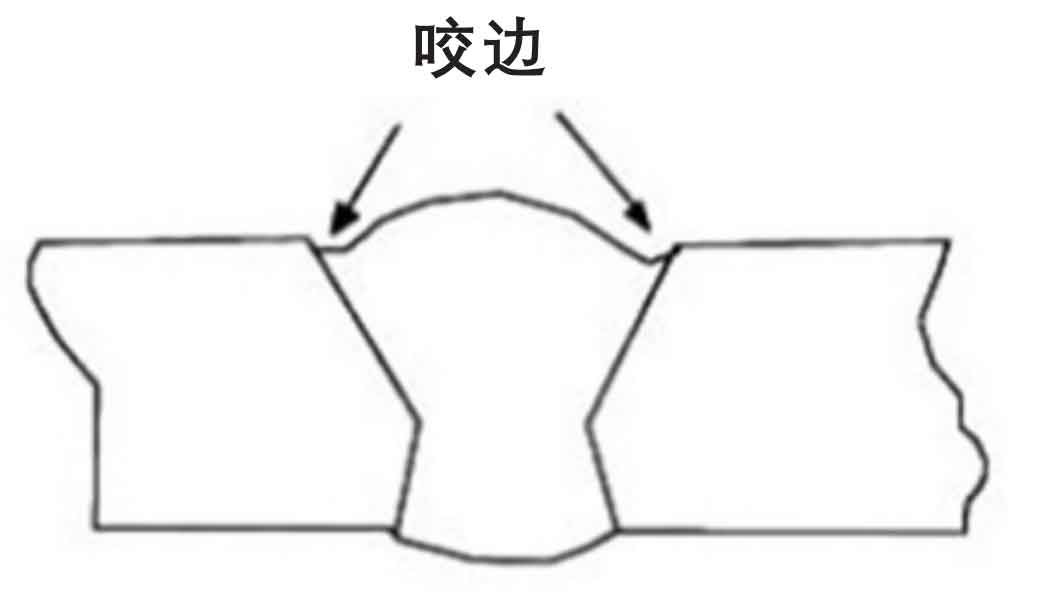Preventing Weld Undercut Made Easy: Secret Techniques Unveiled
Preventing Weld Undercut Made Easy: Secret Techniques Unveiled
Blog Article
Grasping the Art of Welding: Just How to Prevent Undercut Welding Issues for Flawless Manufacture Outcomes
By comprehending the origin causes of undercut welding and carrying out efficient methods to prevent it, welders can raise their craft to new levels of excellence. In the search of flawless construction outcomes, understanding the art of welding to avoid undercut issues is not just a skill yet a need for those striving for perfection in their work.
Comprehending Undercut Welding

To stop undercut welding, welders should make certain appropriate welding criteria, such as changing the existing, voltage, traveling rate, and keeping the correct electrode angle. By comprehending the reasons of undercut welding and carrying out preventative actions, welders can achieve top notch, structurally sound welds.
Reasons For Undercut in Welding
Recognizing the variables that add to undercut in welding is crucial for welders to produce high-quality, structurally sound welds. Damaging happens when the weld metal does not appropriately load the groove formed between the base steel and the formerly deposited weld metal. A number of factors can lead to damage in welding. One common cause is too much warmth input. Welding at heats for prolonged durations can lead to the base metal thawing greater than preferred, bring about undercut. Poor welding incorrect or current welding speed can likewise add to damage. Insufficient current may not give enough warmth to melt the base and filler steels properly, while extreme rate can avoid appropriate blend, causing undercut. Additionally, inappropriate electrode angles or incorrect torch manipulation strategies can create locations of reduced weld metal deposition, advertising undercut. Comprehending these causes and carrying out proper welding methods can help stop damaging issues, making certain long lasting and strong welds.
Techniques to stop Undercutting

To reduce the risk of undercutting in welding, welders can use critical welding techniques focused on boosting the top quality and stability of the weld joints. One efficient method is to adjust the welding parameters, such as voltage, existing, and take a trip rate, to guarantee appropriate warmth input and deposition. Preserving an ideal electrode angle and making certain regular travel speed can likewise assist protect against undercut. In addition, utilizing the correct welding technique for the specific joint arrangement, such as weave or stringer beads, can contribute to reducing damaging. Preventing weld undercut.
Additionally, proper joint preparation, including ensuring tidy base materials devoid of contaminants and using the appropriate welding consumables, is crucial in protecting against undercut problems. Utilizing back-step welding techniques and controlling the weld grain account can likewise help distribute warmth uniformly and lessen the risk of undercut. Regular examination of the weld joint during and after welding, along with implementing quality control actions, can assist in detecting and attending to damaging problems promptly. By implementing these methods carefully, welders can achieve perfect fabrication results with minimal undercut flaws.
Significance of Appropriate Welding Criteria
Selecting and keeping ideal welding parameters is necessary for achieving effective welds with marginal defects. Welding specifications describe variables such as voltage, present, travel rate, electrode angle, and shielding gas flow price that straight affect the welding procedure. These criteria should be very carefully adjusted based upon the sort of material being welded, its density, and the welding technique used.
Correct welding parameters guarantee the correct amount of heat is put on thaw the base steels and filler material uniformly. If the criteria are set too expensive, it can lead to excessive warm input, creating distortion, burn-through, or spatter. On the various other hand, if the parameters are as well reduced, incomplete fusion, absence of infiltration, or undercutting may happen.
Quality Assurance in Welding Workflow

Final Thought
In final thought, grasping the art of welding needs a thorough understanding of undercut welding, its reasons, and strategies to prevent it. By making sure proper welding parameters and executing quality guarantee techniques, perfect manufacture outcomes can be achieved. It is over here important for welders to constantly pursue excellence in their welding operations to stay clear of undercut problems and generate top quality welds.
Undercut welding, an usual issue in welding procedures, occurs when the weld metal does not properly load the groove and leaves a groove or anxiety along the bonded joint.To avoid undercut welding, welders need to make sure Full Report correct welding parameters, such as adjusting the existing, voltage, travel rate, and keeping the correct electrode angle. Insufficient welding existing or incorrect welding rate can likewise contribute to damage.To alleviate the risk of undercutting in welding, welders can employ critical welding techniques intended at boosting the top quality and integrity of the weld joints.In final thought, mastering the art of welding calls for a comprehensive understanding of undercut welding, its causes, and techniques to prevent it.
Report this page